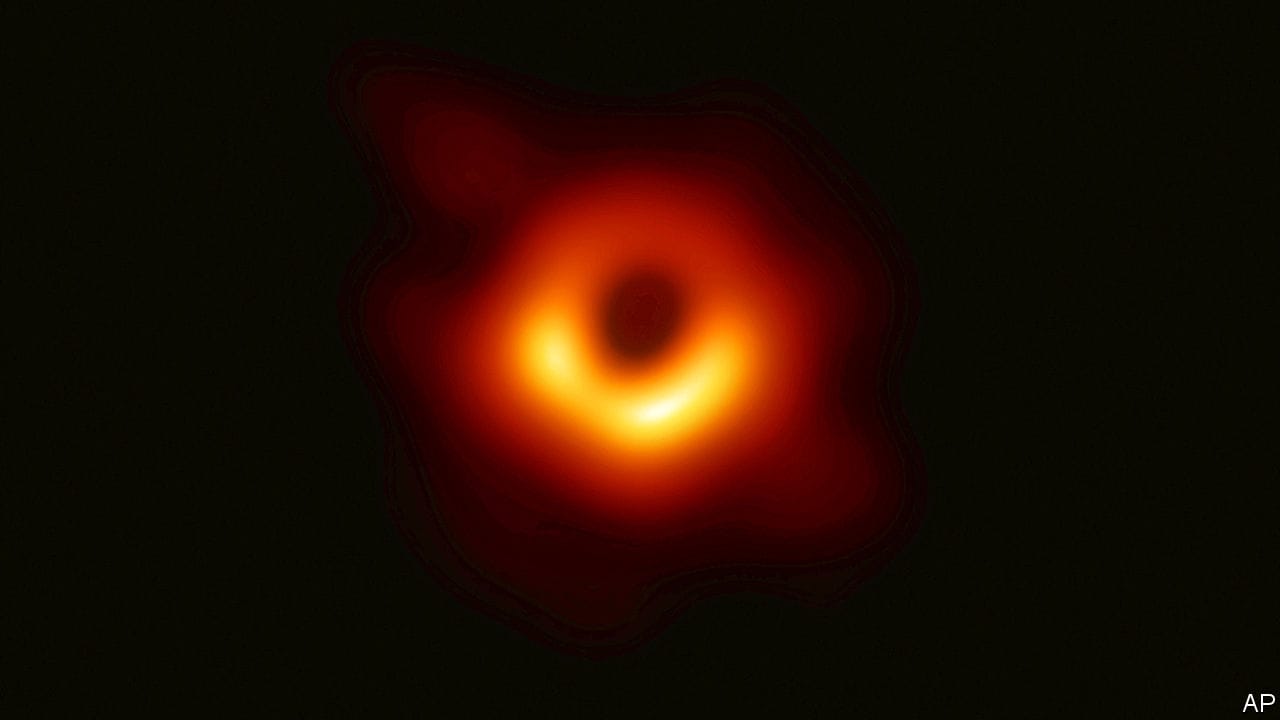- by
- 07 24, 2024
-

-
-
Loading

Loading

WHAT BLACK HOLES do to the things around them is hard to miss. Matter hurtling into them at almost the speed of light gives off all sorts of radiation, sometimes so much of it that it can be seen half a cosmos away. The black holes themselves, though, are another matter. They are, by cosmic standards, extremely small. And they are defined by having gravitational fields so strong that nothing, not even light, can escape them. That is why it is remarkable that an international team of more than 200 radio astronomers have, through years of painstaking work, actually contrived a glimpse of one.The black hole in question (pictured below) is located at the centre of a galaxy 55m light-years from Earth called Messier 87, one of the largest and most luminous galaxies in the nearby universe. Astronomers have for some time suspected that it houses a phenomenally massive black hole—one 6.5bn times more massive than the Sun, and more than a thousand times more massive than the black hole at the centre of the Milky Way galaxy in which the Earth and Sun sit.